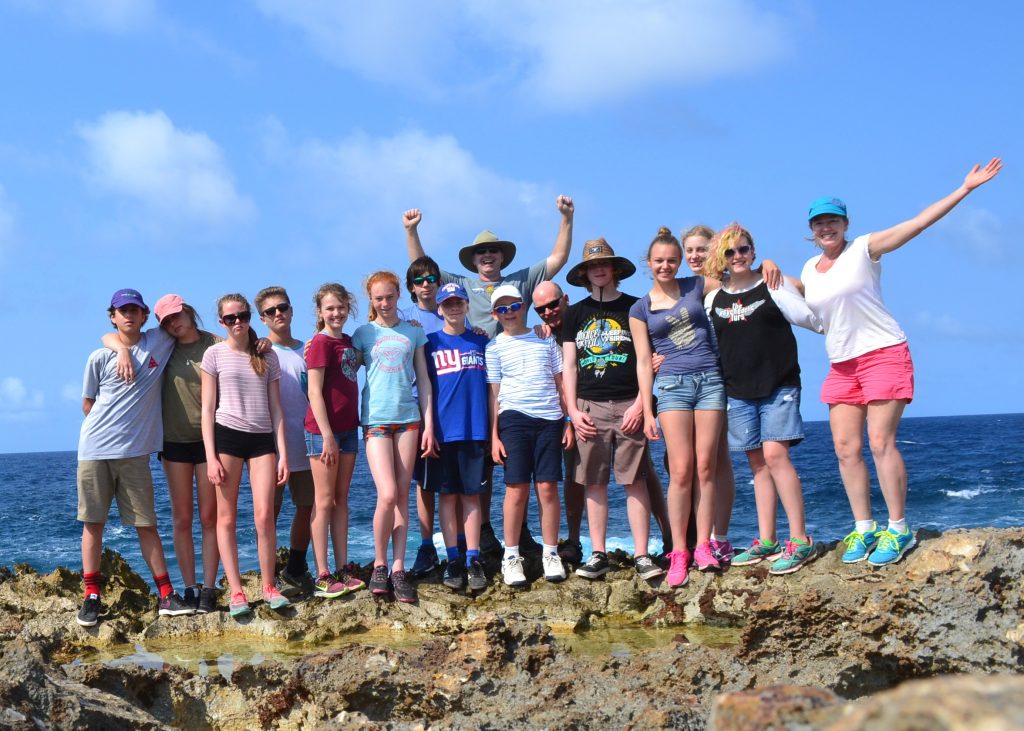Just a few short weeks ago, I had the opportunity to travel with 13 middle school students from the Alexander Dawson School in Colorado. Along with 2 of their teachers, we set out for the Southern Caribbean Island of Bonaire, a diver’s paradise with shallow clear water and abundant marine life. The people of Bonaire were way ahead of their time and declared the waters around their island a National Marine Park over 30 years ago. This was key, as our primary goals were to explore the underwater park, collect data on fish identification and abundance, and learn techniques in underwater photography.
Most of the dives we did right off the shore. We rented trucks and took all of our tanks and gear with us out to different areas of the island. We all geared up on the sand or rocks, checked our buddies gear, and then headed in. Wow. Gorgeous water and lots of fish. Our highlights of the days were eels, tons of tarpon, tangs, boxfish, huge porcupine fish, grouper, and even sea turtles. All of the students worked in teams to record the fish they saw on underwater slates and used waterproof fish guides to help them make the correct ID. All of us got to take pictures using our underwater cameras. It was a lot of fun, but a challenge to get really good photos.
One day we dove right off the dock at our resort and explored a wrecked boat that sat on the ocean floor 35 feet down. It was full of fish darting in and out. We also got to see coral nursery areas, where volunteers from the Coral Reef Restoration Foundation are seeding the next generation of reefs. It was wonderful to see so much coral growing right before our eyes. At night we all hunkered down next to the water and entered our fish ID data into the REEF.org database. So many of the students were checking the identification books to make sure they had the right species. Was it a scrawled cowfish or a trunkfish? It was wonderful for me to see how students ideas about the ocean and fish changed over just a few days. Literally, many of them began to see fish as something more than just a fish. They had behaviors, they had attitudes, they even had personalities. Connecting with nature at this level is what it’s all about, because it changes perceptions and creates a desire to protect nature. In an age when young people spend less than 5% of their lives outside, I feel honored to share these explorations and journeys of discovery with them.
Today I went to reunite with those 13 students as they presented highlights of their trip to well over 100 of their classmates. They talked about what it is like to dive with all of the gear and said it wasn’t scary- it was really fun and beautiful. They shared the underwater photos they took with pride. The students also discussed how they identified and recorded the fish species they encountered, and why doing that is important. As I stood listening and watching all of them talk about the experience, I couldn’t help but be so very proud. Hooray for the next generation of ocean conservationists!

